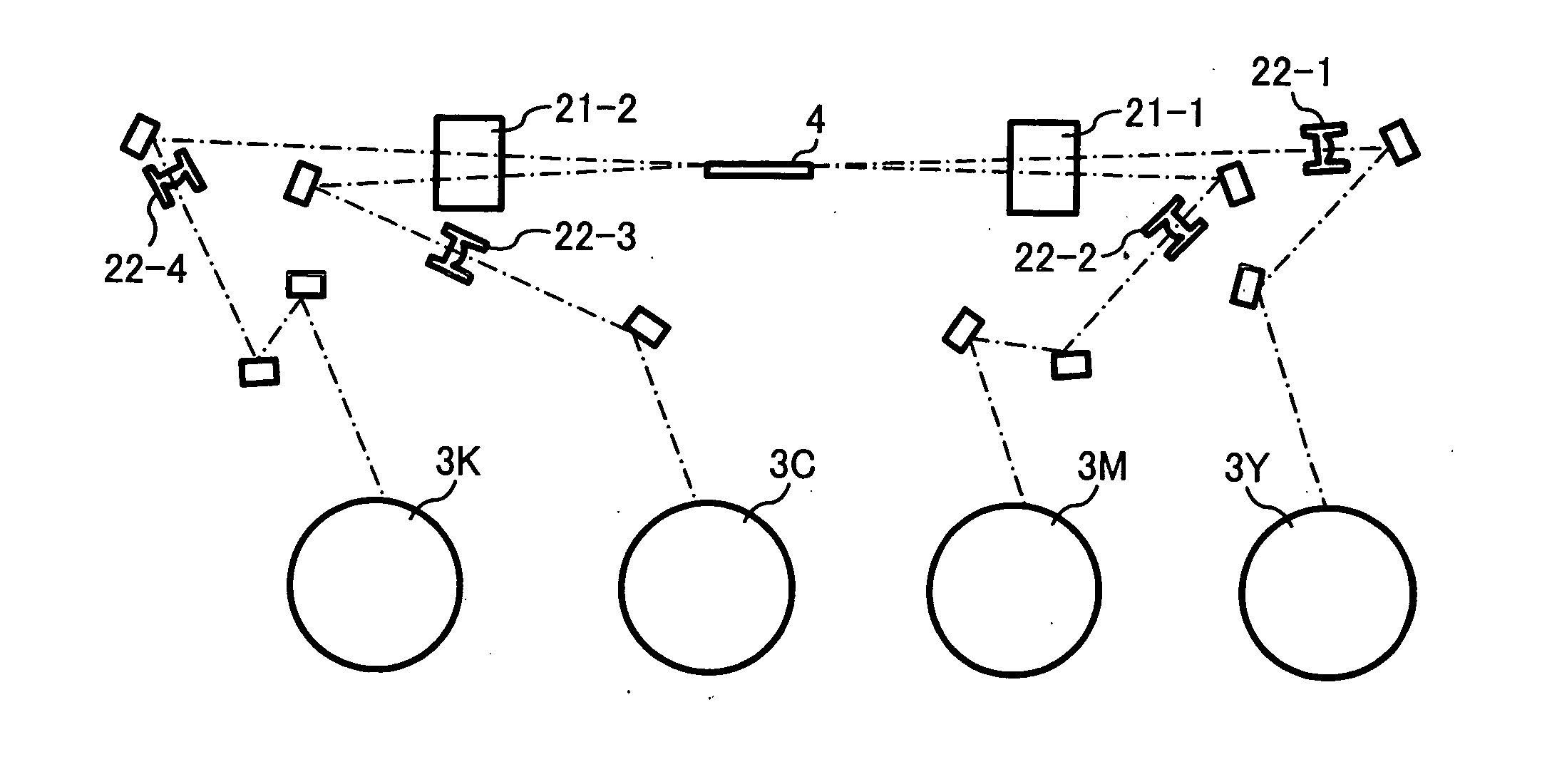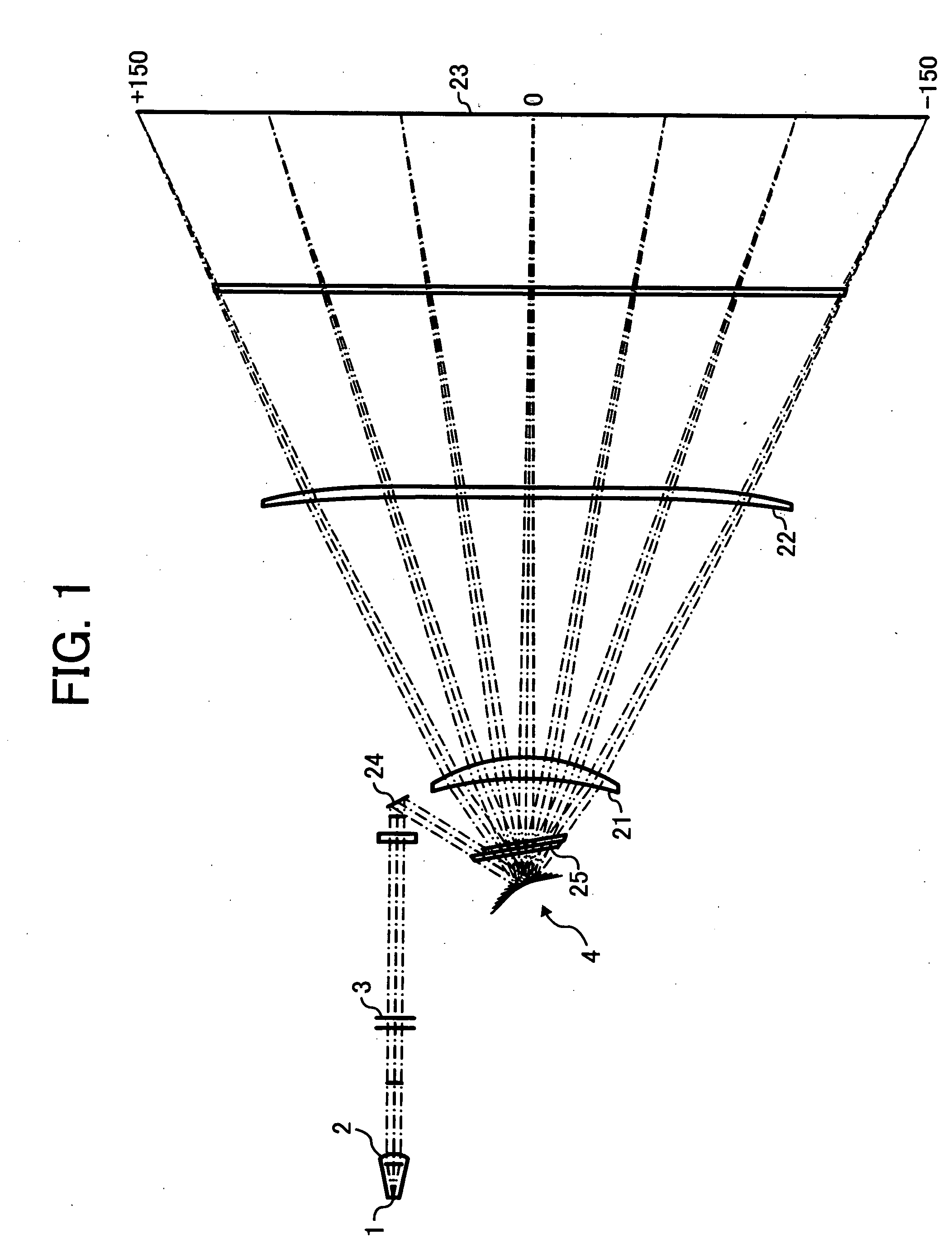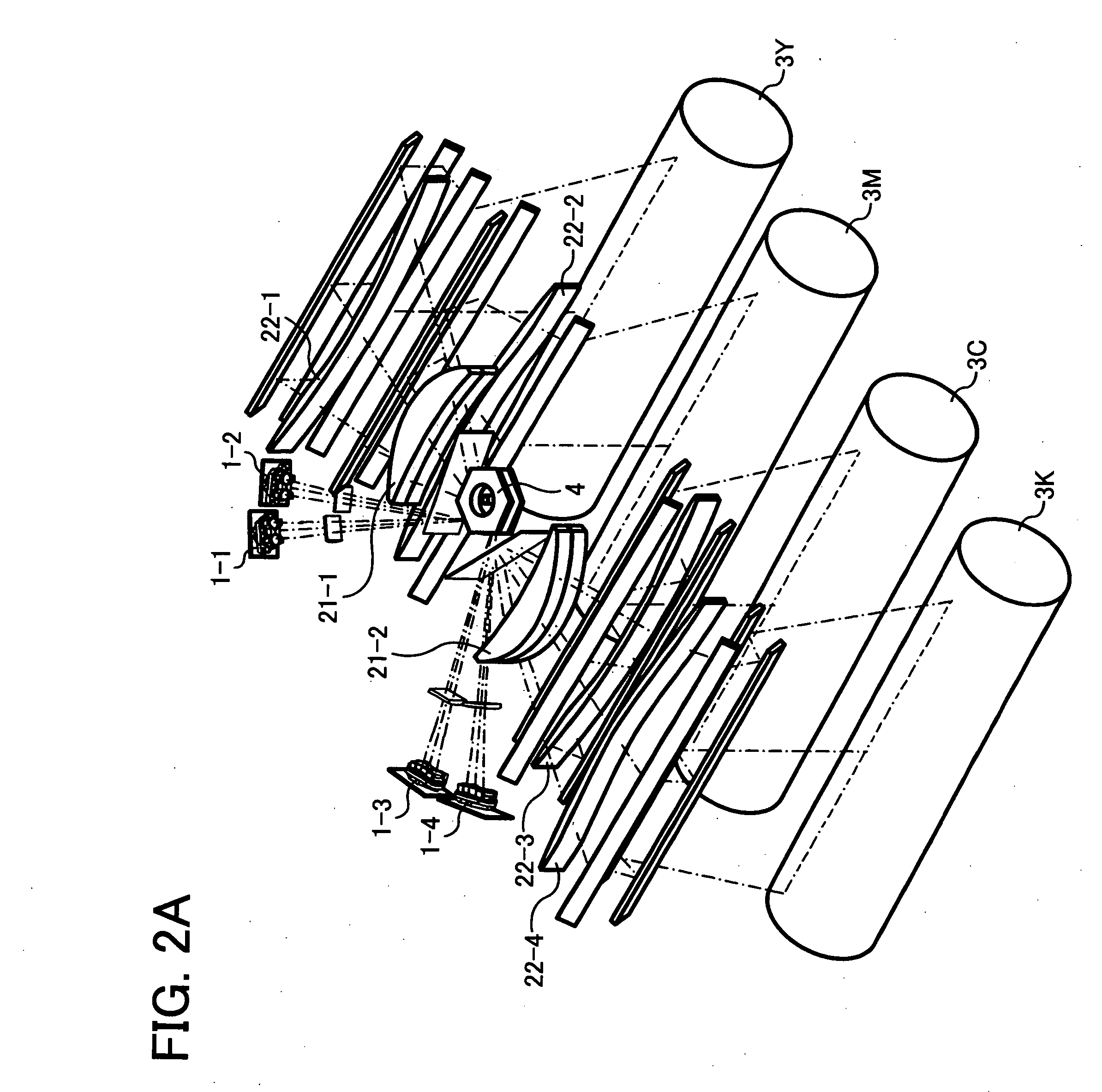Optical scanner and image forming apparatus
a technology of optical scanner and image forming apparatus, which is applied in the direction of digitally marking record carriers, visual presentation using printers, instruments, etc., can solve the problems of reducing the cost and dimensions of the overall apparatus, difficult to let the light flux from the light source, and the cost of the polygon mirror section occupies a considerable portion of the cos
- Summary
- Abstract
- Description
- Claims
- Application Information
AI Technical Summary
Benefits of technology
Problems solved by technology
Method used
Image
Examples
numerical example 1
[0107] Hereinafter, examples of the optical scanner according to the present invention with specific numerical values will be cited. The semiconductor laser employed as the light source has an emission wavelength of 655 nm, and the divergent flux thereby emitted is converted into a “substantially parallel flux” by a coupling lens having a focal length of 15 millimeter, thus to form a “lengthy line image in the main scanning direction” on the position of the deflecting reflection surface of the polygon mirror surface, via a cylindrical lens having a focal length of 70 millimeter. The polygon mirror has six deflecting reflection surfaces, and an inscribed radius of 18 millimeter. Also, the rotating shaft and the deflecting reflection surfaces are formed in parallel, and the light beam is obliquely made incident upon the deflecting reflection surface at 2.4 degrees in the sub-scanning direction, while in the main scanning direction a light flux directed to the field height 0 is made in...
PUM
 Login to View More
Login to View More Abstract
Description
Claims
Application Information
 Login to View More
Login to View More - R&D
- Intellectual Property
- Life Sciences
- Materials
- Tech Scout
- Unparalleled Data Quality
- Higher Quality Content
- 60% Fewer Hallucinations
Browse by: Latest US Patents, China's latest patents, Technical Efficacy Thesaurus, Application Domain, Technology Topic, Popular Technical Reports.
© 2025 PatSnap. All rights reserved.Legal|Privacy policy|Modern Slavery Act Transparency Statement|Sitemap|About US| Contact US: help@patsnap.com



